It's been over two millennia since the ancient Greek physician, Hippocrates — a man who is widely considered the founding figure of Western medicine and is commemorated by the Hippocratic Oath — wrote that all disease begins in the gut.
Surveying the nutritional landscape of modern America, even Hippocrates himself would be shocked by how right he turned out to be.
The Standard American Diet (SAD) – A Gut Health Catastrophe
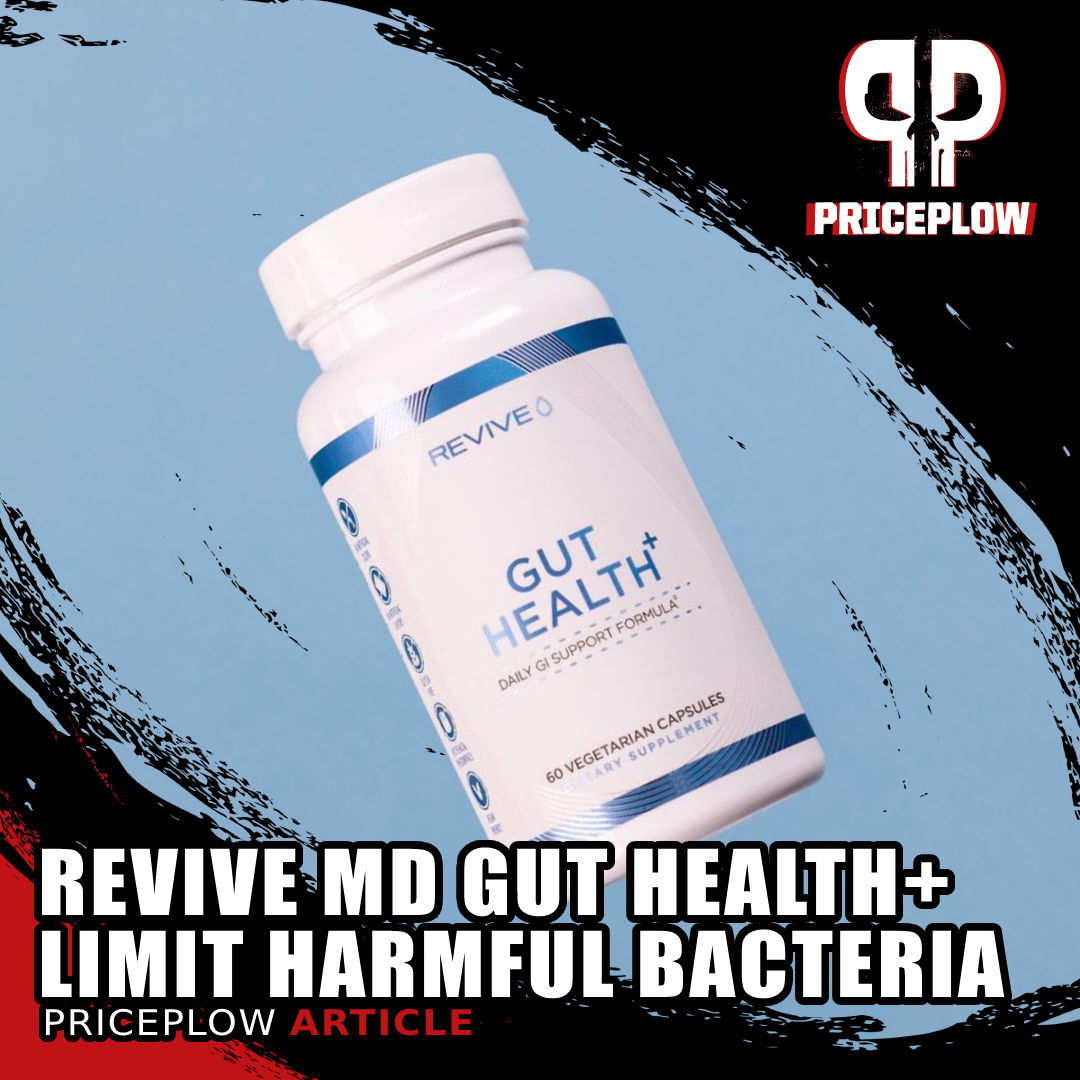
The latest part of the incredible Revive MD gut supplement stack, Gut Health+ helps to limit harmful bacterial overgrowth in just two capsules!
Digestive disorders are widely prevalent in the United States, with at least 11% of all Americans suffering from one.[1] In all likelihood, this number is a lot higher. For example, inflammatory bowel syndrome (IBS), the most common gastrointestinal illness,[2] goes undiagnosed an estimated 75% of the time![3]
Gastrointestinal disease is a spectrum, of course, so we can have GI issues that stop short of full-blown clinical illness. According to one 2018 survey, a whopping 61% of American adults had suffered from some GI complaint in the last seven days.[4]
Amongst the many concerns, one of the prevalent issues of our time is bacterial overgrowth -- and this is where Revive MD Gut Health+ comes in. Released on Black Friday of 2022, it's the next in the epic line of gut health supplements from the formidable brand following GI+ and Digest Aid (as well as Revive MD Fiber and Revive MD Probiotic).
Revive MD Gut Health+ – Limit Harmful Bacterial Overgrowth
Whereas Revive MD's GI+ focused on gut microbiome composition and gut lining health, Gut Health+ works to limit bacterial overgrowth, which can subsequently reduce and prevent bloating while minimizing gas. You'll notice strong antimicrobial agents discussed in this article.
Let's get into it, but first, take a look at the PricePlow news and deals:
Revive MD Gut Health+ – Deals and Price Drop Alerts
Get Price Alerts
No spam, no scams.
Disclosure: PricePlow relies on pricing from stores with which we have a business relationship. We work hard to keep pricing current, but you may find a better offer.
Posts are sponsored in part by the retailers and/or brands listed on this page.
This area is reserved for Team PricePlow's upcoming videos.
Subscribe to our channel and sign up for notifications so you catch it when it goes live!
Revive MD Gut Health+ Ingredients
In a single 2 capsule serving of Gut Health+ from Revive MD, you get the following:
-
Caprylic Acid (53%) (from Medium Chain Triglycerides) – 200 mg
Caprylic acid is a medium chain triglyceride, meaning it's composed of fatty acids between 6 and 12 carbon atoms in length.[5] Caprylic acid is also known as C8, due to it having eight carbon bonds.
Research consistently finds gut flora disruptions in obese individuals, and MCTs in general have been recognized for their potential to improve gut flora composition.[6] This is awesome, because having a healthy gut microbiome is a huge factor in metabolic health.
Antimicrobial effects
One of the most common gastrointestinal complaints we hear about is candida overgrowth. This condition can be caused when Candida albicans (a naturally-occurring yeast species in the body) opportunistically grows to the point where it affects the health of its human host. Candida overgrowth can happen as the result of many common experiences – for example, antibiotic treatment is associated with this,[7] because once the antibiotics kill off affected micro-organisms, Candida faces less competition for resources.
Fortunately for us, researchers have discovered that caprylic acid possesses significant antimicrobial activity, and is particularly good at killing Candida.[8,9] Even if you aren't suffering from Candida overgrowth, taking some caprylic acid can help keep your Candida population in check, thus acting as a prophylactic against overgrowth.
Caprylic acid is also great at controlling Heliobacter pylori, another common and troublesome gut parasite that's been implicated in the onset of stomach ulcers.[10]
Anti-inflammatory effects
Caprylic acid and the other MCTs also show promise as a therapy for irritable bowel syndrome (IBS), thanks in part to the fact that they're rapidly absorbed and used as a fuel source by cells within the digestive tract.[11]
This supplies your cells with the energy they need to renew and repair your gut lining, the integrity of which is a key factor in digestive health.[11]
The reason this matters is that when your gut lining is compromised, undigested food and endotoxins can leak out of your digestive tract, causing inflammation in the rest of your body. This is a potentially crippling condition called leaky gut, and as we will see, many of the ingredients in Revive MD Gut Health+ help decrease the likelihood of leaky gut.
So a healthy gut lining can lead to reduced levels of inflammation not just in the GI tract, but in the rest of your body as well.
The anti-inflammatory effects of MCTs also seem to help mitigate the symptoms of certain food allergies and intolerances.[11] Part of the explanation here is that MCTs have been shown in vitro to inhibit the secretion of interleukin-8 (IL-8), an inflammatory cytokine.[12]
-
Thyme (Thymus vulgaris) (aerial parts) Extract 4:1 – 150 mg
Next up we have another potent antimicrobial substance, thyme extract.
Thyme is another great Candida killer, and has been shown to actually inhibit Candida's ability to create biofilms. Since biofilms are one of microorganisms' key strategies to resist antibiotic treatment, inhibiting the formation of biofilms is a powerful way to help kill microbes.[13]
In fact, thyme is so powerfully anti-microbial that it's been identified by researchers as a potential food preservative.[14]
One randomized, double-blind study found that thyme oil increased stool frequency while decreasing the severity of unwanted gastrointestinal symptoms.[15] One reason why this happens is probably that thyme oil can increase digestive enzyme activity in animals, which usually improves digestion.[16]
Thyme also seems to be a potent antispasmodic substance, which means it can potentially help treat stomach cramps and spasms that cause suffering for so many people with GI conditions.[17]
Additionally, thyme contains a constituent named carvacrol,[18] which has anti-parasitic properties.[19,20]
-
Oregano (Origanum vulgare L.) (whole plant) Extract Pwd 4:1 – 100 mg
Oregano is about as directly beneficial for digestive health as it gets – this plant has been shown in pig models (a very close analogue to humans) to actually improve the integrity of the intestinal barrier that separates the digestive tract from the rest of your body.[21]
The same study found that oregano has significant antimicrobial activity against Escherichia coli or E. coli, a pathogenic bacterium that most of us are familiar with.[21] This suggests that there may be some overlap between the effects of thyme and oregano – and indeed, the anti-microbial properties of oregano are so strong that it's actually been proposed as a treatment for multiple drug resistant pathogenic bacteria.[22]
One study in mice found that mice treated with oregano oil had almost as high a survival rate as mice treated with pharmaceutical antibiotics – 43% of the oregano mice lived past 30 days of exposure to pathogens, compared to 50% of the antibiotic-treated mice.[23]
Oregano also has strong anti-Candida activity, and inhibits the formation of microbial biofilms in much the same fashion as thyme.[24]
All this overlap makes sense when you consider that thymol is a major bioactive constituent of both oregano and thyme, and contributes to most of both plants' beneficial effects.[25,26]
Like thyme, oregano also contains anti-parasitic carvacrol,[20] and there are additional studies showing it inhibiting enteric parasites,[27] something it's traditionally been used for.[28]
-
Milk Thistle (Silybum marianum) (seed) Extract – 100 mg
We hear a lot about milk thistle as a liver supplement, but it turns out this herb has great digestive benefits as well.
For one thing, it has been shown to inhibit the formation of stomach ulcers.[29] It does this not just by altering the pH of your stomach, but also by protecting your cells through upregulation of key endogenous antioxidants like glutathione and superoxide dismutase.[29]
It's also been shown to help prevent inflammation of the stomach lining in cases of H. pylori infection.[30]
A rat study showed that although milk thistle doesn't increase glutathione levels everywhere in the body, it does increase glutathione concentrations in the liver, intestine, and stomach specifically.[31] This gastrointestinal-specific effect of milk thistle on antioxidant status is key to understanding why milk thistle works so well as a GI health supplement.
Chronic inflammation caused by oxidative stress is a major health concern. It's been linked to the development of insulin resistance and diabetes,[32-34] and gut dysbiosis, the disruption of your gastrointestinal microbiome.[35]
Dysbiosis is linked to debilitating gastrointestinal conditions like Inflammatory bowel disease (IBD) and irritable bowel syndrome (IBS), which generally come with symptoms like acid reflux, heartburn, food intolerance, gas, and bloating.[36] Definitely not great for gut health!
It's a huge win if we can help prevent the onset of dysbiosis from occurring, and milk thistle's ability to increase antioxidant defenses in the GI tract is definitely a huge step in the right direction.
-
Lemon Balm (Melissa officinalis) (aerial parts) Extract – 50 mg
It looks like mint because it is part of the mint family. But when you crush these up... the effect is incredible
Lemon balm is often used for its calming properties, but has also been shown to help improve symptoms of indigestion.[37] One mechanism of action behind lemon balm's effects is its ability to increase contractile activity in certain parts of the digestive tract,[38] which can help speed up the transit of food through your intestines.
It's also a known anti-spasmodic substance, meaning it can help relieve the cramping and spasms that are common in gastrointestinal disorders.[39]
Lemon balm infusions have also been shown to increase blood levels of catalase, glutathione, and superoxide dismutase, the same endogenous antioxidants that are upregulated by milk thistle.[40]
The Revive MD Gut Supplement Stack Expands
In addition to new standalone ingredients such as Revive MD Betaine HCl (good for gut reacidification) and Revive MD Zinc Carnosine (often used against ulcers), Revive MD has several other gut health supplements:
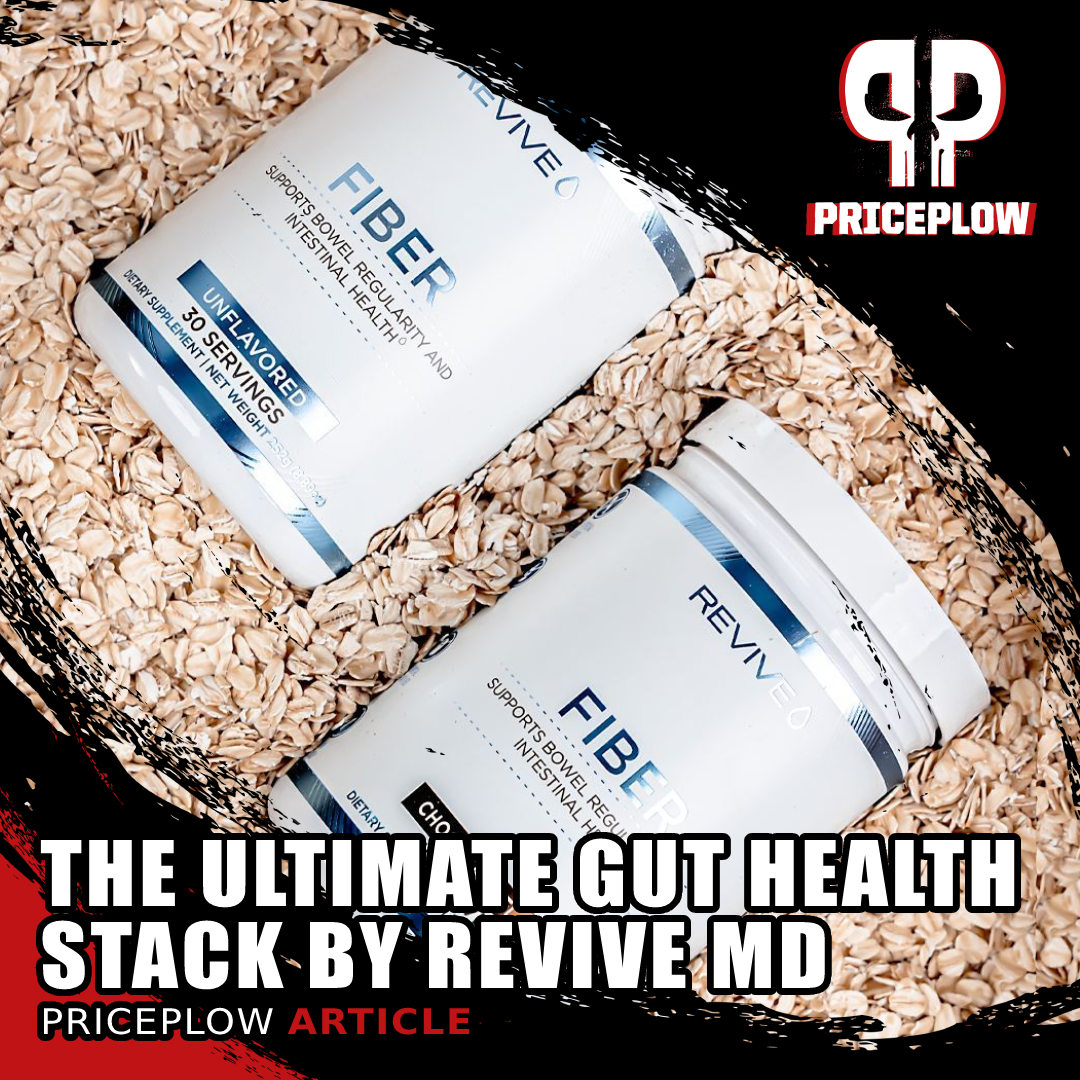
Gut Supplements: Prepare to meet the Ultimate Gut Health Supplement Stack by Revive MD
- Revive MD Fiber: A Fiber Supplement with the Best of Both Worlds
- Revive MD GI+: A Gut Health Supplement That Does More
- Revive MD Probiotic: Boost Your Healthy Gut Flora
- Revive MD Digest Aid: Digestive Enzymes to Beat the Bloat
- Revive MD Glutamine: Why Add to Your Gut Health Stack
They're not all necessary to take at once, but we can GI+ and Glutamine combining well with Gut Health+ for a total repair and restore function. After that, we envision a solid Probiotic round after running Gut Health+.
Digest Aid and Fiber can pretty much always be used, depending on your existing diet and philosophy on fiber.
Conclusion: Kill the Negative Overgrowth

Supplements formulated to optimize your health! See them all on our Revive MD page on PricePlow.
Revive MD Gut Health+ heavily focuses on gut microbiome composition through inhibition of pathogenic microbes, a decision that reflects the large body of cutting-edge research on this topic.
Increasingly, the scientific consensus is that if you want to take care of your health, then heed the wisdom of Hippocrates, as gut microbiome dysregulation has been shown to be associated with chronic inflammation and many other devastating diseases.
So too has gut mucosal lining damage, another area of emphasis for Revive MD Gut Health+.
In other words, for the right individuals who are having trouble with bacteria, we think Revive MD Gut Health+ is right on the money.
Revive MD Gut Health+ – Deals and Price Drop Alerts
Get Price Alerts
No spam, no scams.
Disclosure: PricePlow relies on pricing from stores with which we have a business relationship. We work hard to keep pricing current, but you may find a better offer.
Posts are sponsored in part by the retailers and/or brands listed on this page.
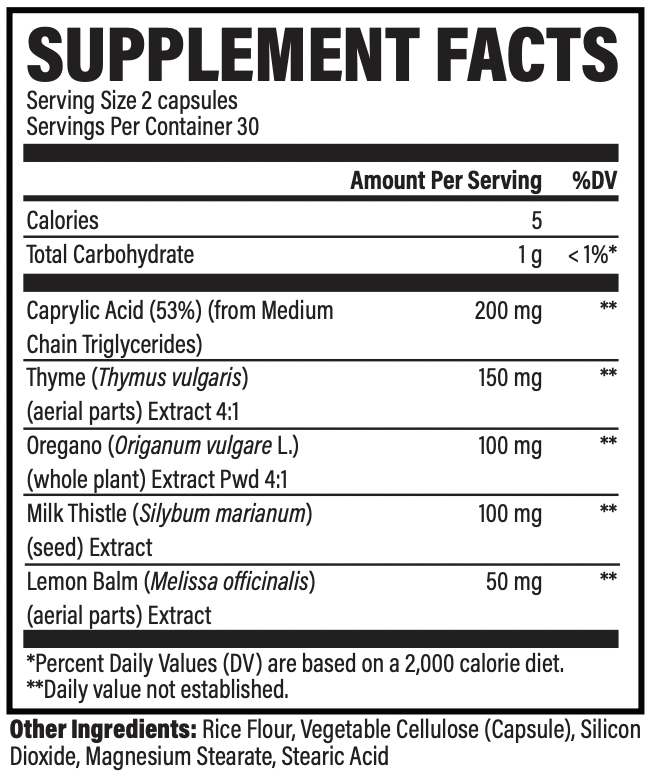
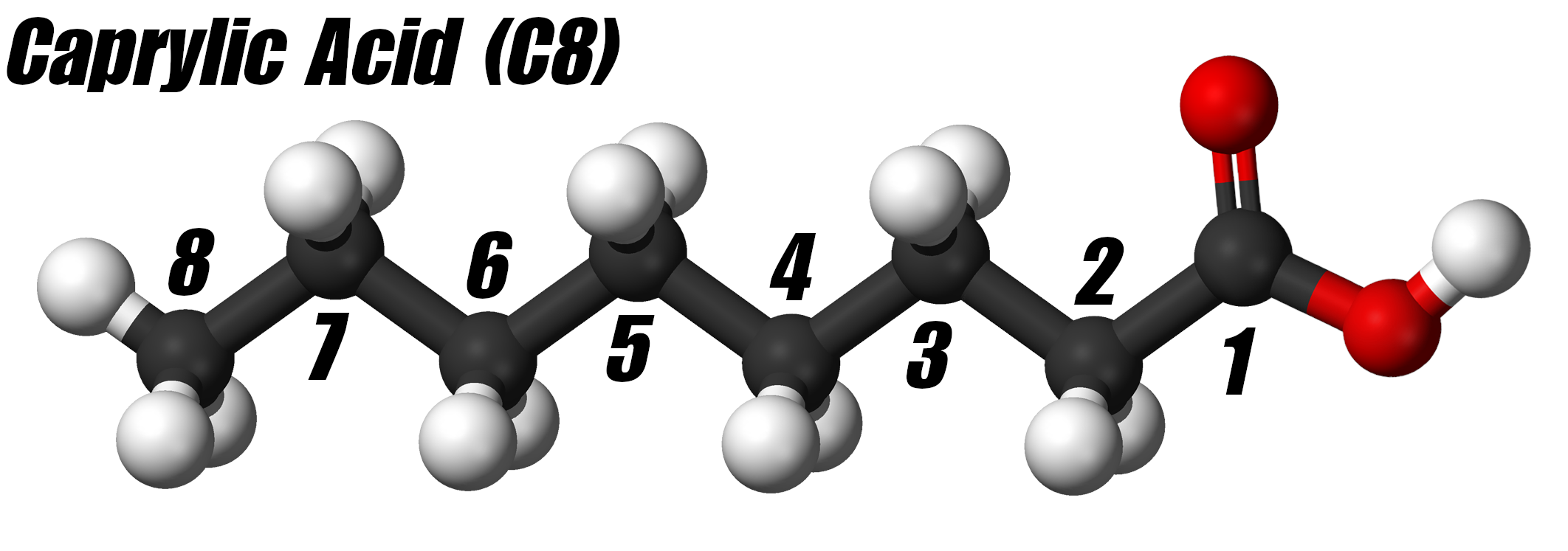
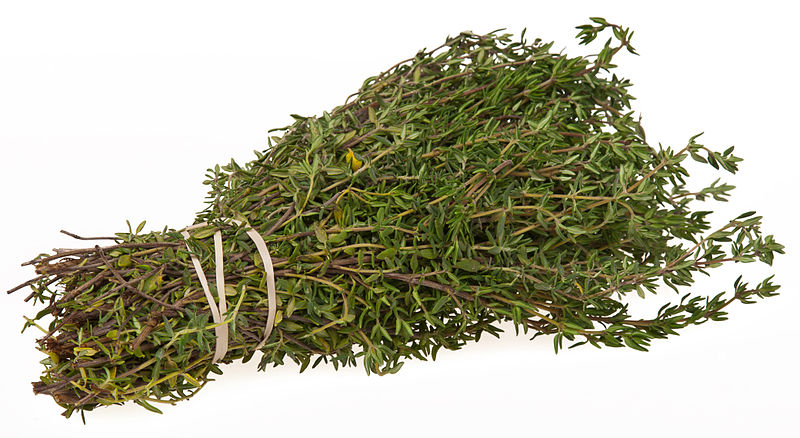
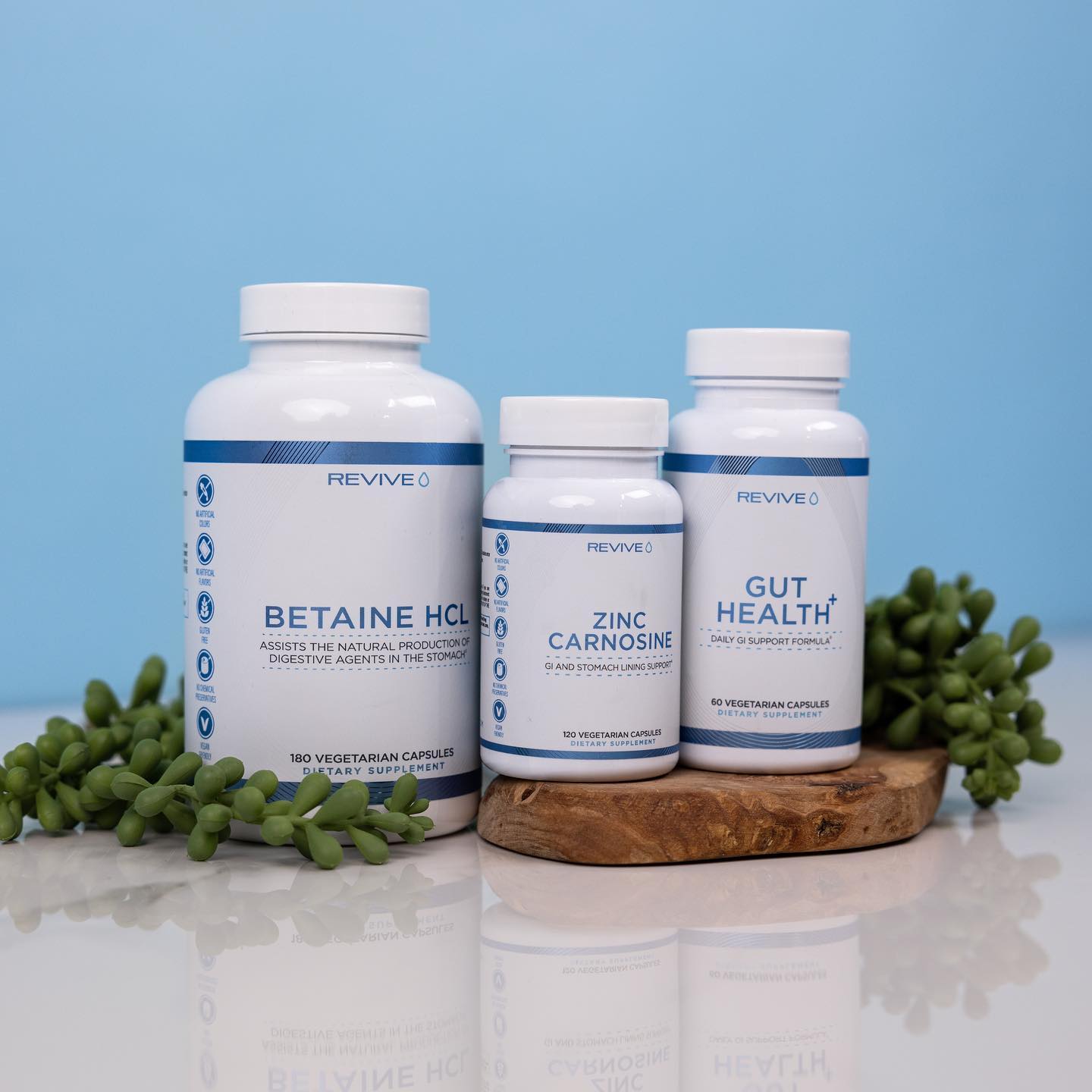
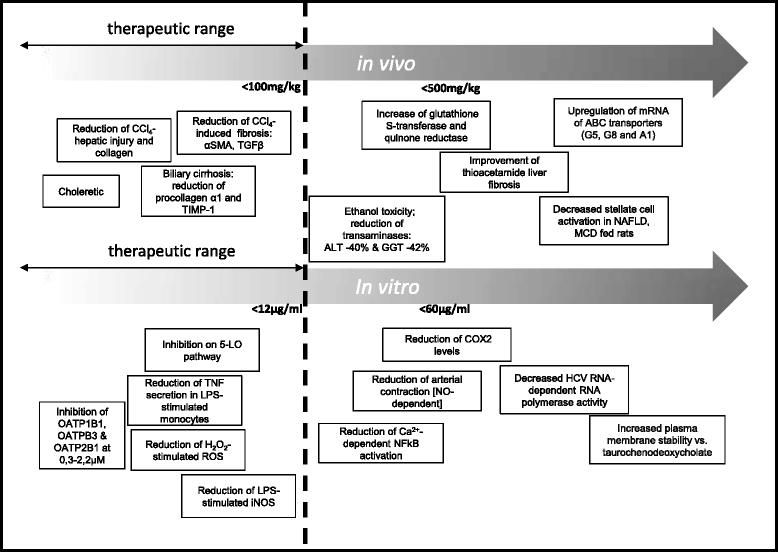
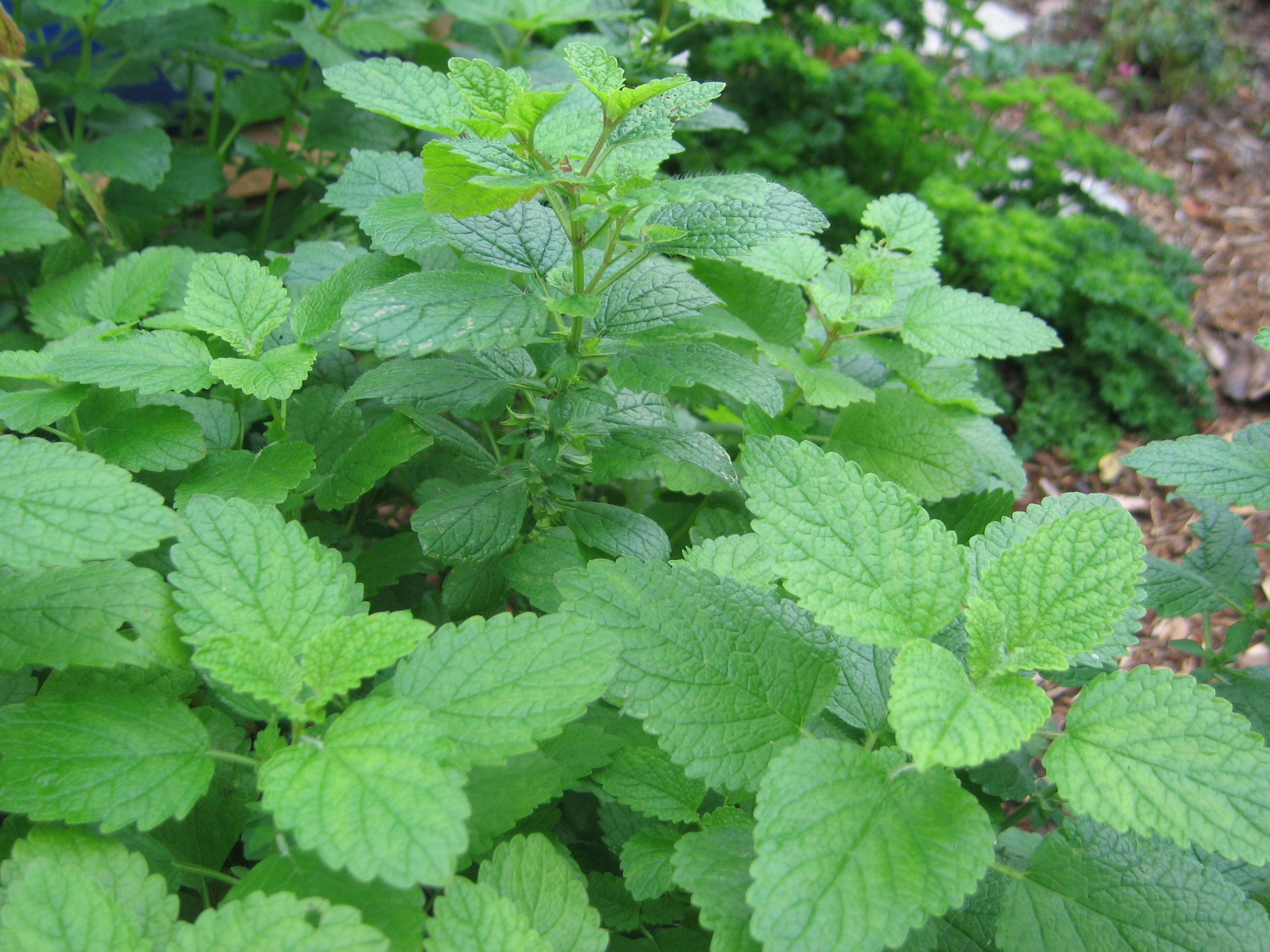


Comments and Discussion (Powered by the PricePlow Forum)